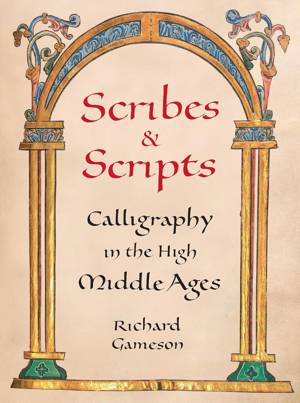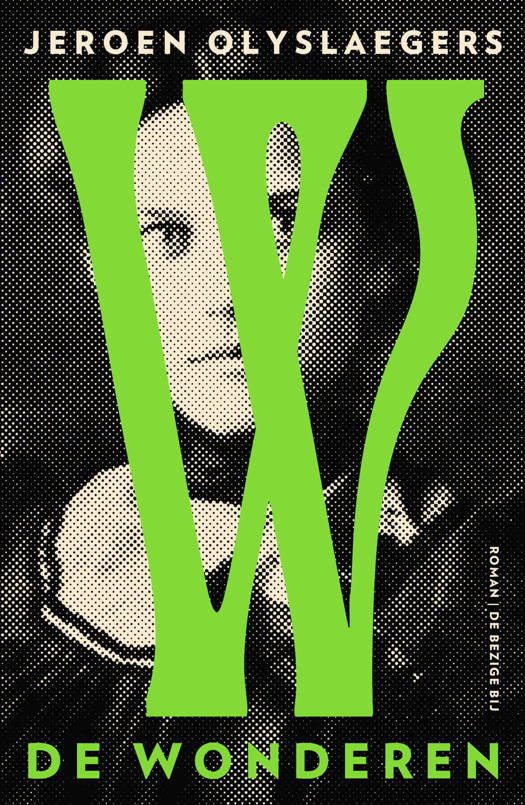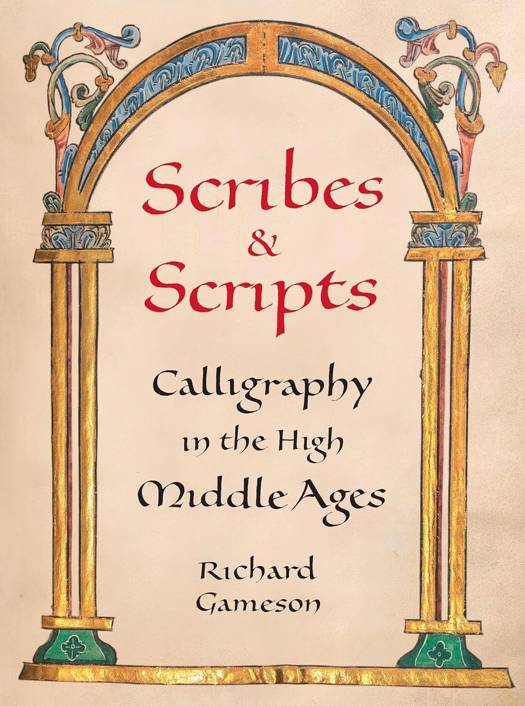
Je cadeautjes zeker op tijd in huis hebben voor de feestdagen? Kom langs in onze winkels en vind het perfecte geschenk!
- Afhalen na 1 uur in een winkel met voorraad
- Gratis thuislevering in België vanaf € 30
- Ruim aanbod met 7 miljoen producten
Je cadeautjes zeker op tijd in huis hebben voor de feestdagen? Kom langs in onze winkels en vind het perfecte geschenk!
- Afhalen na 1 uur in een winkel met voorraad
- Gratis thuislevering in België vanaf € 30
- Ruim aanbod met 7 miljoen producten
Zoeken
€ 96,45
+ 192 punten
Omschrijving
In the era from 1000 to 1250, Europe underwent momentous social changes--including a growth in literacy and the emergence of the first universities--that resulted in a demand for more books. This in turn spurred new methods of book production and a critical period of development in calligraphy: through a series of incremental changes, bold leaps, and cultural exchanges, the rounded forms of the Caroline minuscule gave way to the straight strokes of Gothic blackletter, which were easier to produce--and would form the basis of the first typefaces cut by Gutenberg and his contemporaries. Scribes and Scripts traces this evolution through fifty-six noteworthy illuminated manuscripts--and their scribes, many of whose names and circumstances are known to us.
Author Richard Gameson, an eminent historian of the book, provides a fascinating commentary on the calligraphy and illumination of each manuscript and the career of its scribe, including the social factors that influenced his or her work. At least one page from each manuscript is shown in its entirety, and additional details highlight salient aspects of the calligraphy and decoration. A talented scribe himself, Gameson provides model alphabets and samples of the key stages in the evolution of high medieval script--an invaluable resource for calligraphers.
Scribes and Scripts is perhaps the finest survey of high medieval calligraphy for a general audience, and certainly the richest, for it places the subject in the context of history and, indeed, individual lives. It will be an essential volume, and a source of considerable delight, for anyone interested in calligraphy, illuminated manuscripts, or medieval history.
Author Richard Gameson, an eminent historian of the book, provides a fascinating commentary on the calligraphy and illumination of each manuscript and the career of its scribe, including the social factors that influenced his or her work. At least one page from each manuscript is shown in its entirety, and additional details highlight salient aspects of the calligraphy and decoration. A talented scribe himself, Gameson provides model alphabets and samples of the key stages in the evolution of high medieval script--an invaluable resource for calligraphers.
Scribes and Scripts is perhaps the finest survey of high medieval calligraphy for a general audience, and certainly the richest, for it places the subject in the context of history and, indeed, individual lives. It will be an essential volume, and a source of considerable delight, for anyone interested in calligraphy, illuminated manuscripts, or medieval history.
Specificaties
Betrokkenen
- Auteur(s):
- Uitgeverij:
Inhoud
- Aantal bladzijden:
- 336
- Taal:
- Engels
Eigenschappen
- Productcode (EAN):
- 9780789214959
- Verschijningsdatum:
- 15/09/2026
- Uitvoering:
- Hardcover
- Formaat:
- Genaaid
- Afmetingen:
- 229 mm x 305 mm

Alleen bij Standaard Boekhandel
+ 192 punten op je klantenkaart van Standaard Boekhandel
Beoordelingen
We publiceren alleen reviews die voldoen aan de voorwaarden voor reviews. Bekijk onze voorwaarden voor reviews.









